Around the world, conflict is exacting a devastating toll on millions of children. With increasing frequency, children are being deliberately and indiscriminately attacked and denied life-saving humanitarian assistance in breach of international humanitarian law. On World Humanitarian Day on 19 August, join UNICEF Canada and our partners in standing together to demand that children are #NotATarget.
Children are #NotaTarget

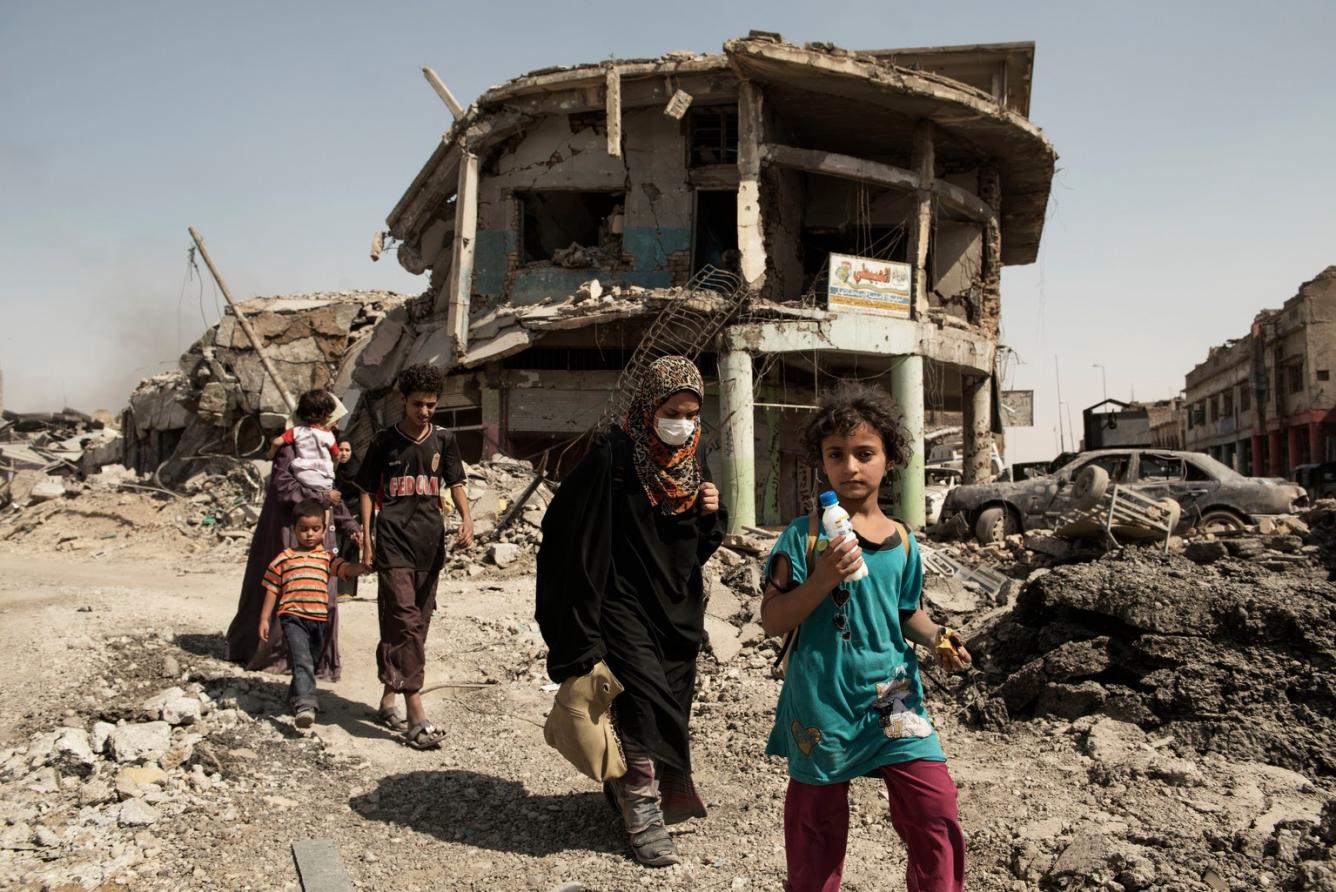
Women and children in Mosul, Iraq, flee for safety past destroyed buildings in July 2017. The use of massive explosive weapons in civilian-populated urban areas puts children at great risk. Half of those being treated in trauma centres in west Mosul with bullet and shrapnel wounds were children.
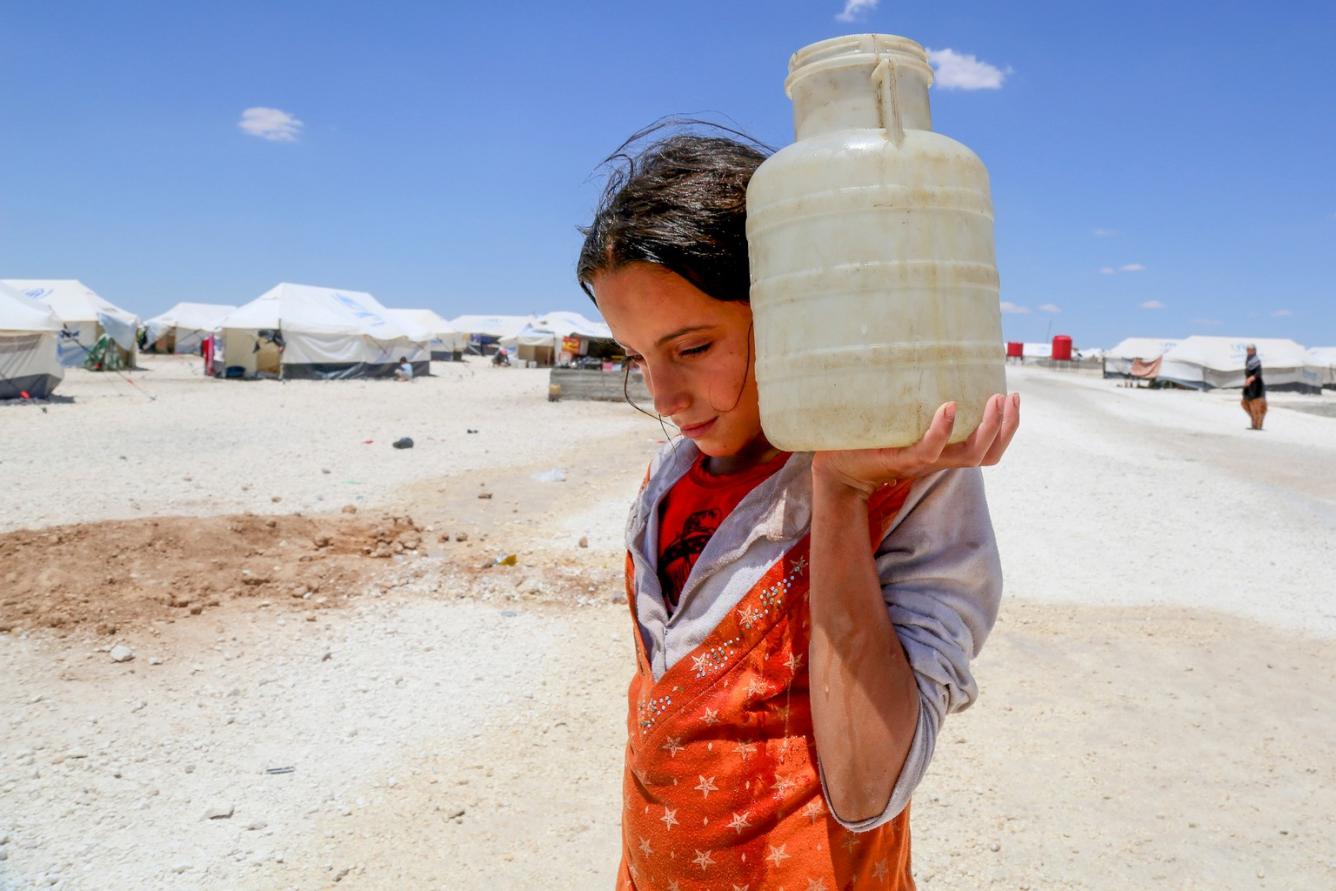
The increase in long-running conflicts, compounded by the rise of violent extremism, means children like Horriya, 12, can be caught up amidst violence and fighting for years. Horriya and her family fled violence in Raqqa four days earlier for a makeshift camp in Ain Issa, Syrian Arab Republic, June 2017.
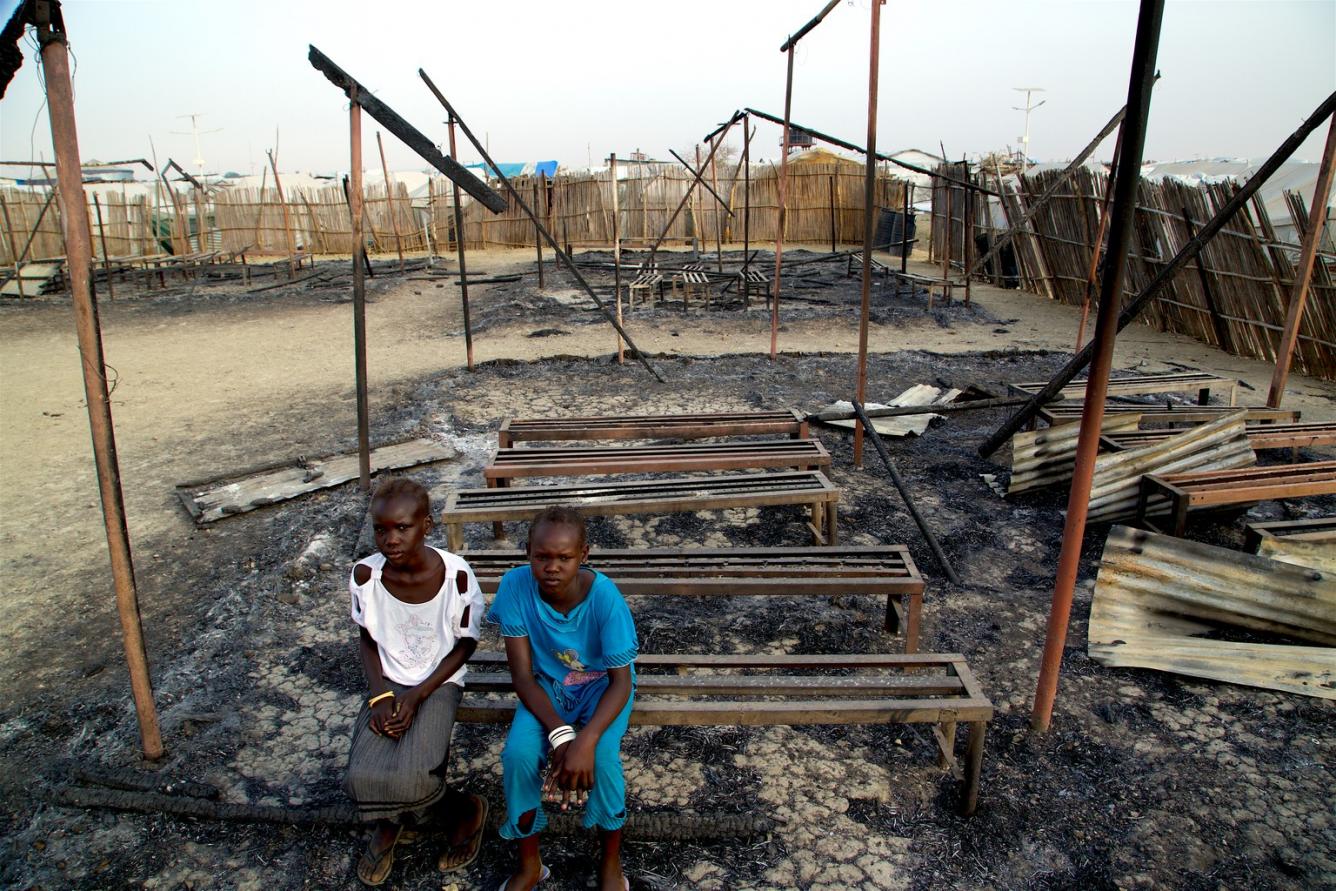
Chubat, 12, (right) and a friend sit in the ruins of her school which was destroyed in fighting in the Malakal Protection of Civilians site, South Sudan, March 2016. Out-of-school children are harder to protect from abduction, recruitment into militias and sexual and economic exploitation.
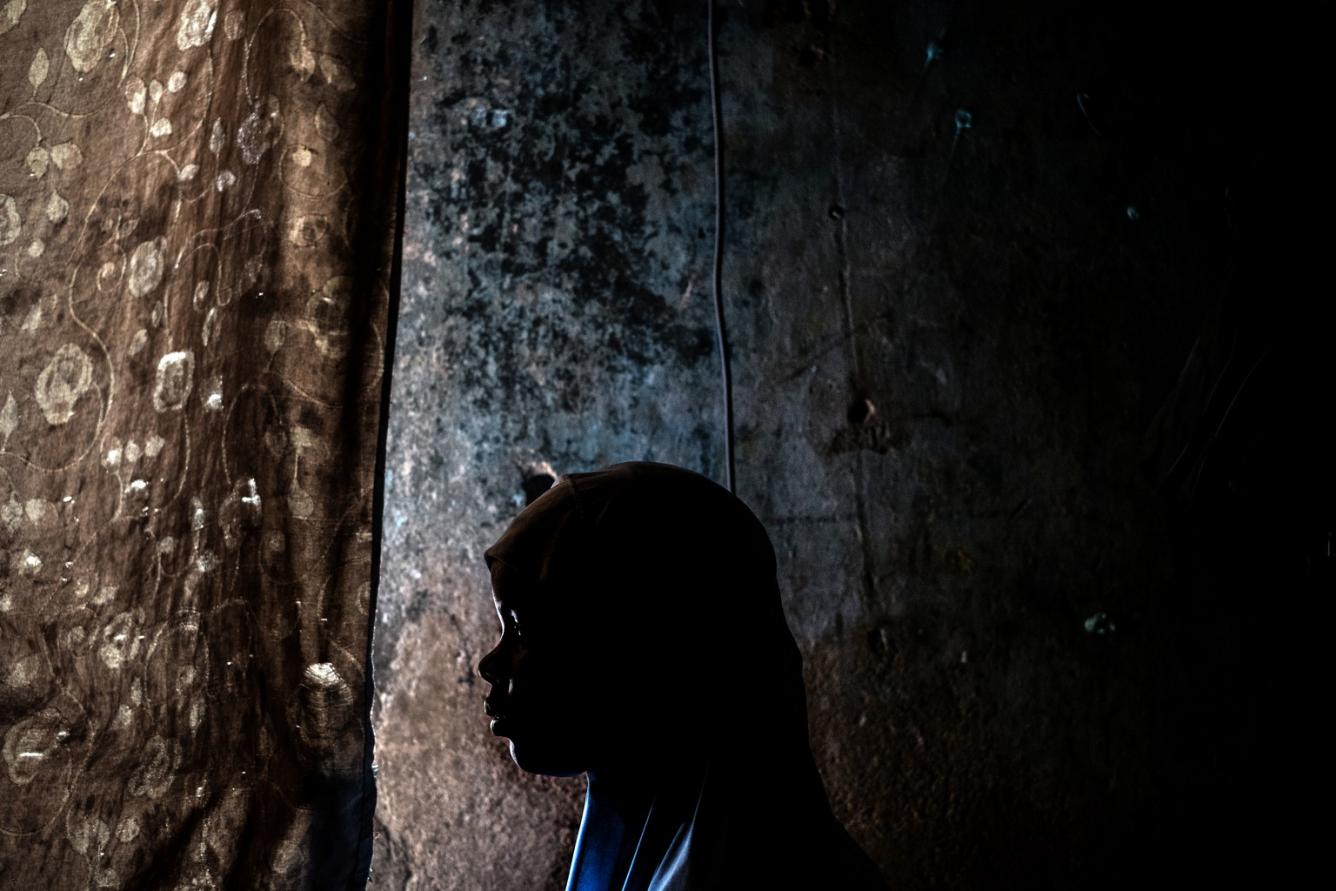
Dada, 15, sits in a community shelter where she lives with her daughter Hussaina, 2, in Maiduguri, Borno State, Nigeria, March 2017. Abducted by Boko Haram at age 12, Dada was forced into marriage and repeatedly raped. She eventually escaped, giving birth to her daughter soon after.
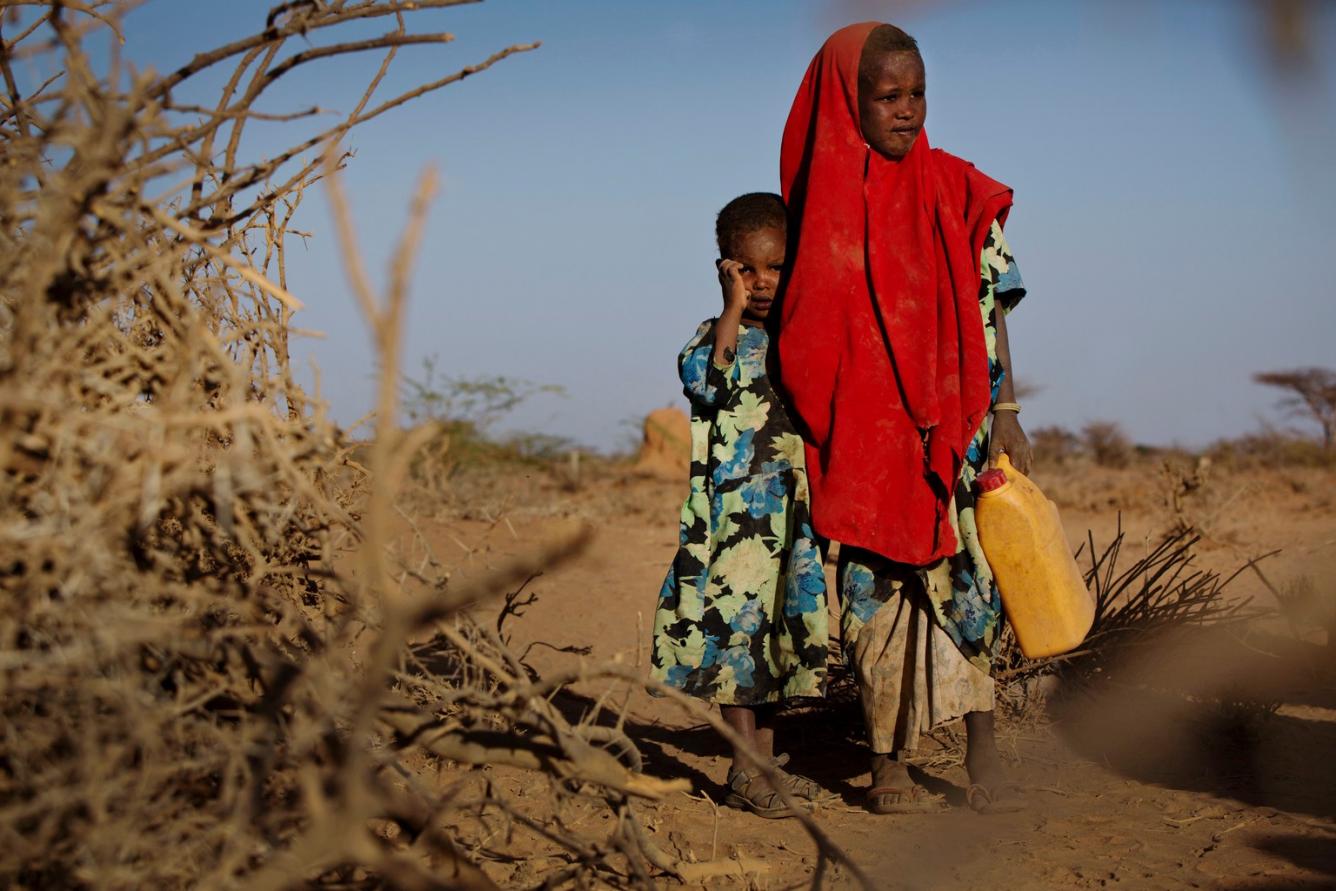
Tirig, 6 (right), and her sister Saua stand outside their makeshift home in Burao, Somalia, March 2017. Tirig and her family were forced to leave home in search of water and food, as a severe drought threatened an already fragile population battered by decades of conflict.
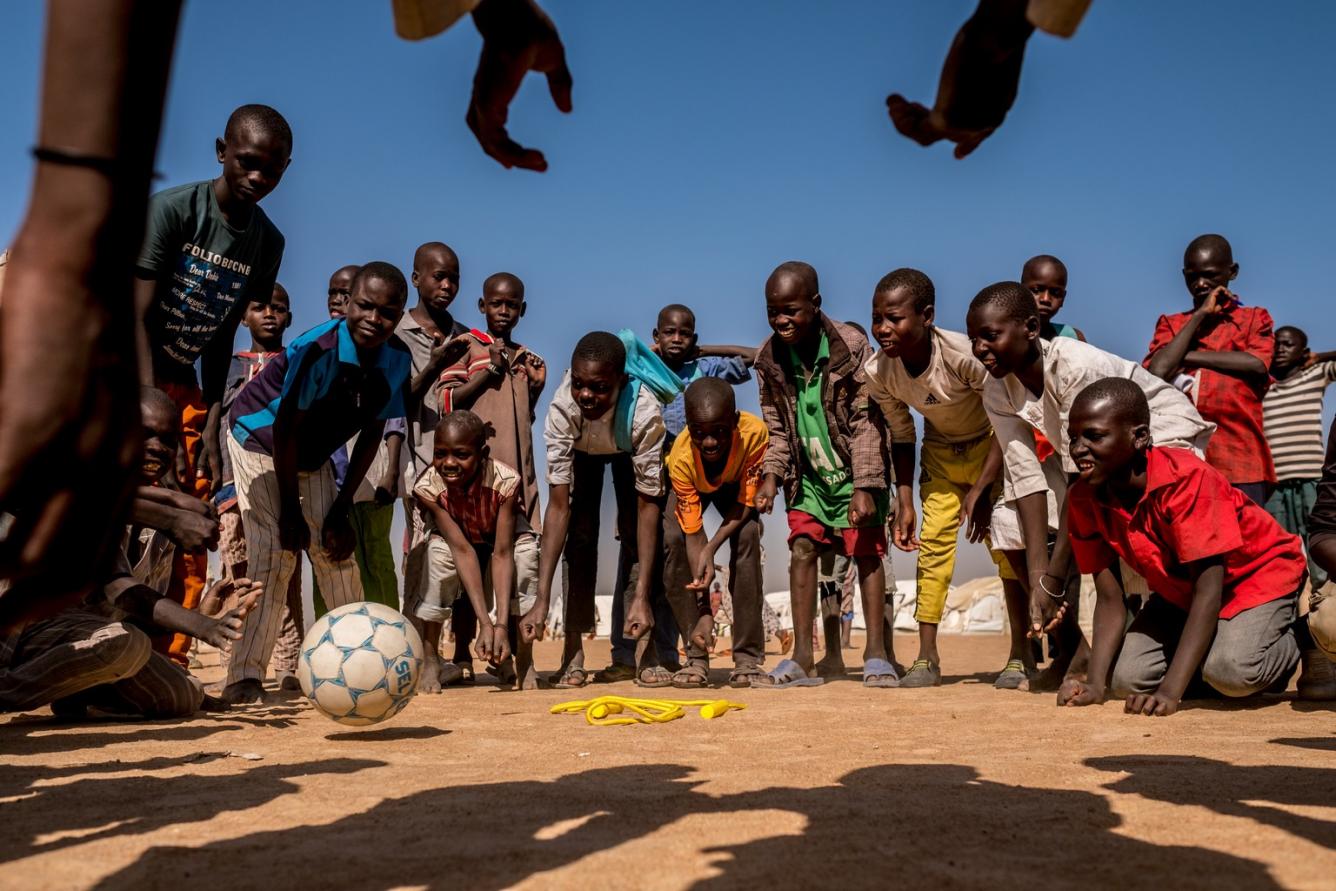
Children play during recess at a primary school at the Bukasi IDP camp, in Maiduguri, Borno State, Nigeria, February 2017. Since the start of the Boko Haram insurgency in 2009, more than 2,295 teachers have been killed and almost 1,400 schools destroyed, denying education to countless children.
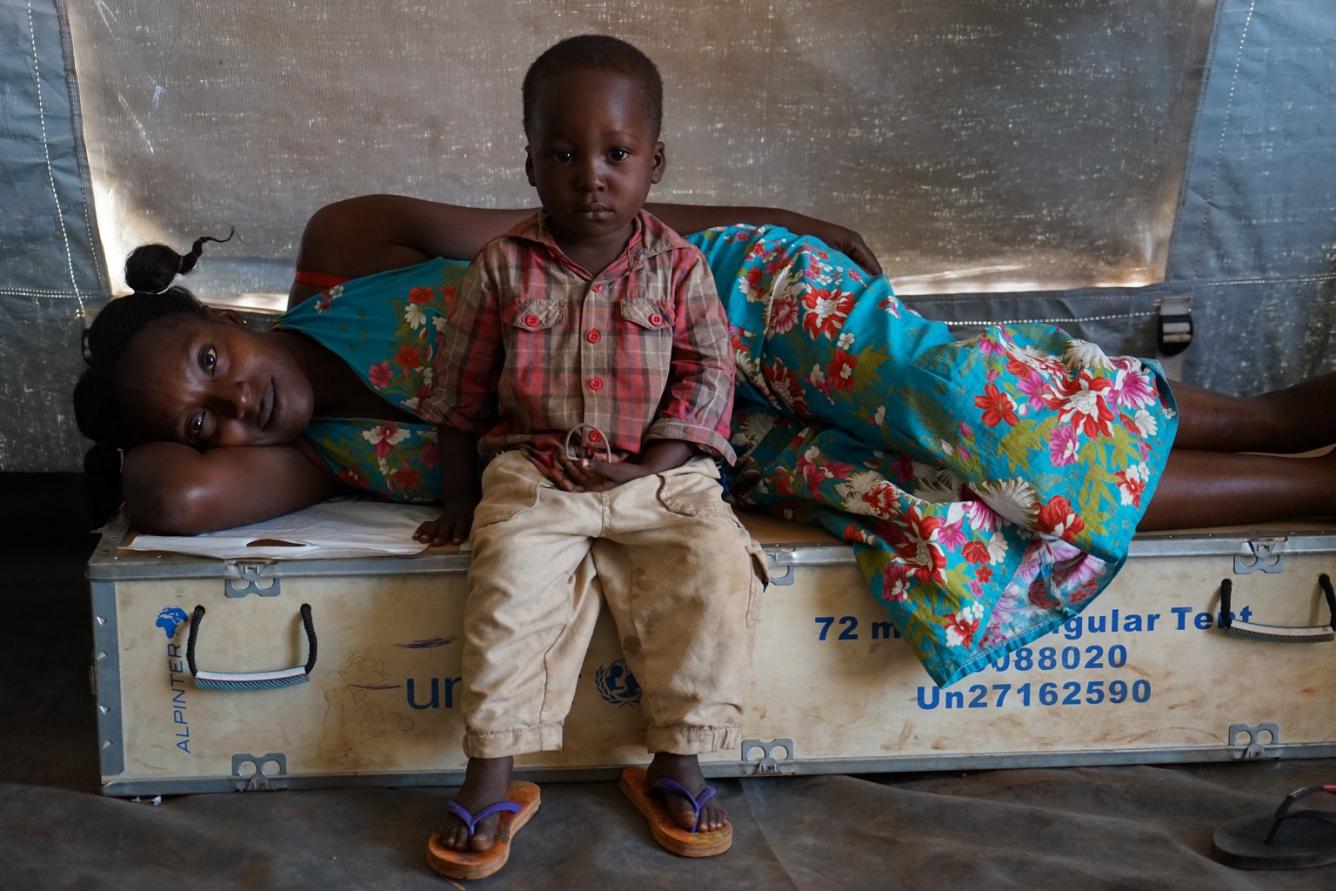
A child and his mother rest at a Child Friendly Space in the Cacanda reception centre for refugees from DRC’s Kasai region, in Dundo, northern Angola, May 2017. At least 850,000 children have been displaced and left vulnerable by widespread acts of extreme violence in the Kasai region.
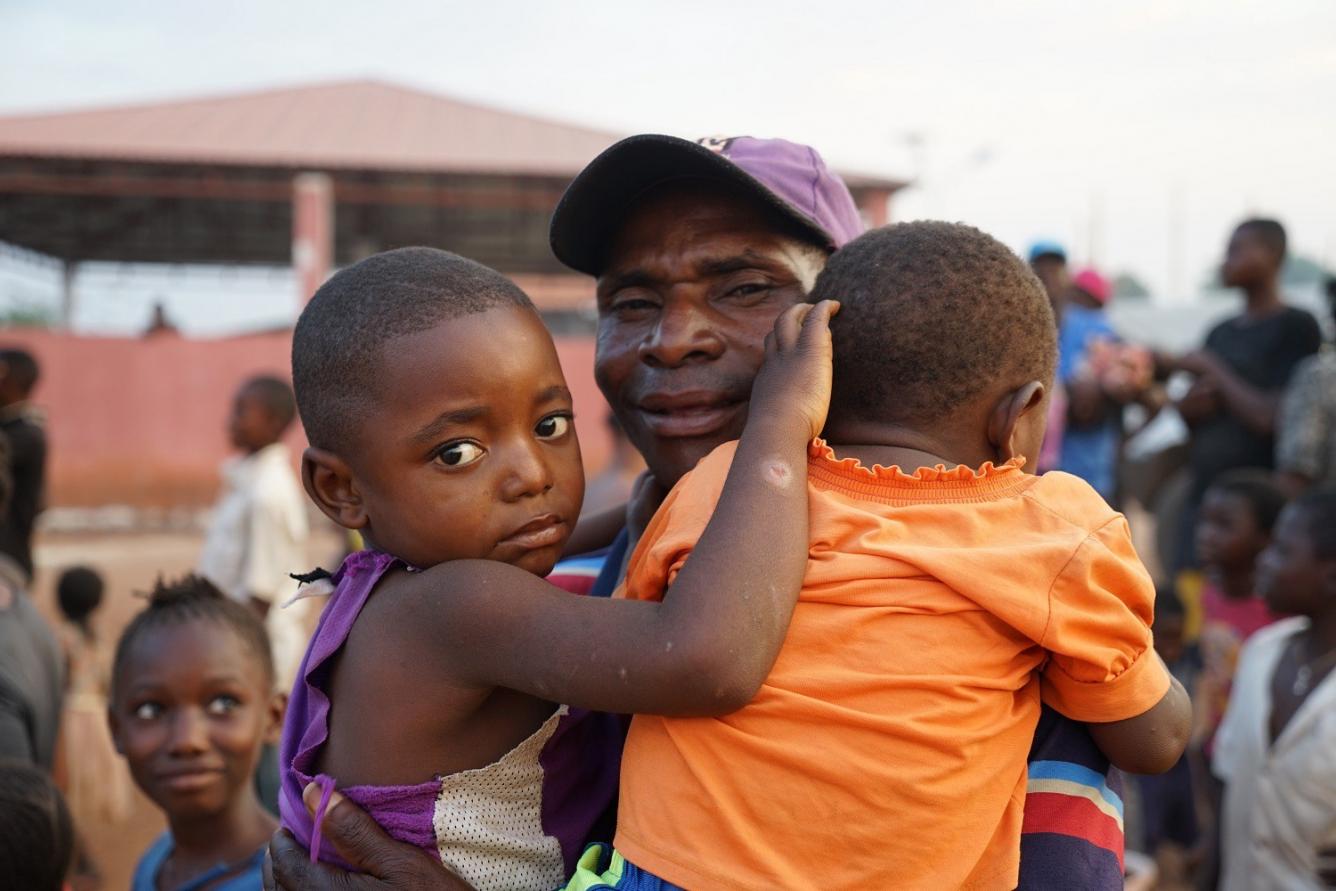
A father smiles after reuniting with his children in the Cacanda reception centre in Dundo, northern Angola, May 2017. Children and adolescents separated from their families are the most vulnerable to abduction, recruitment into militias, violence, exploitation and trafficking.
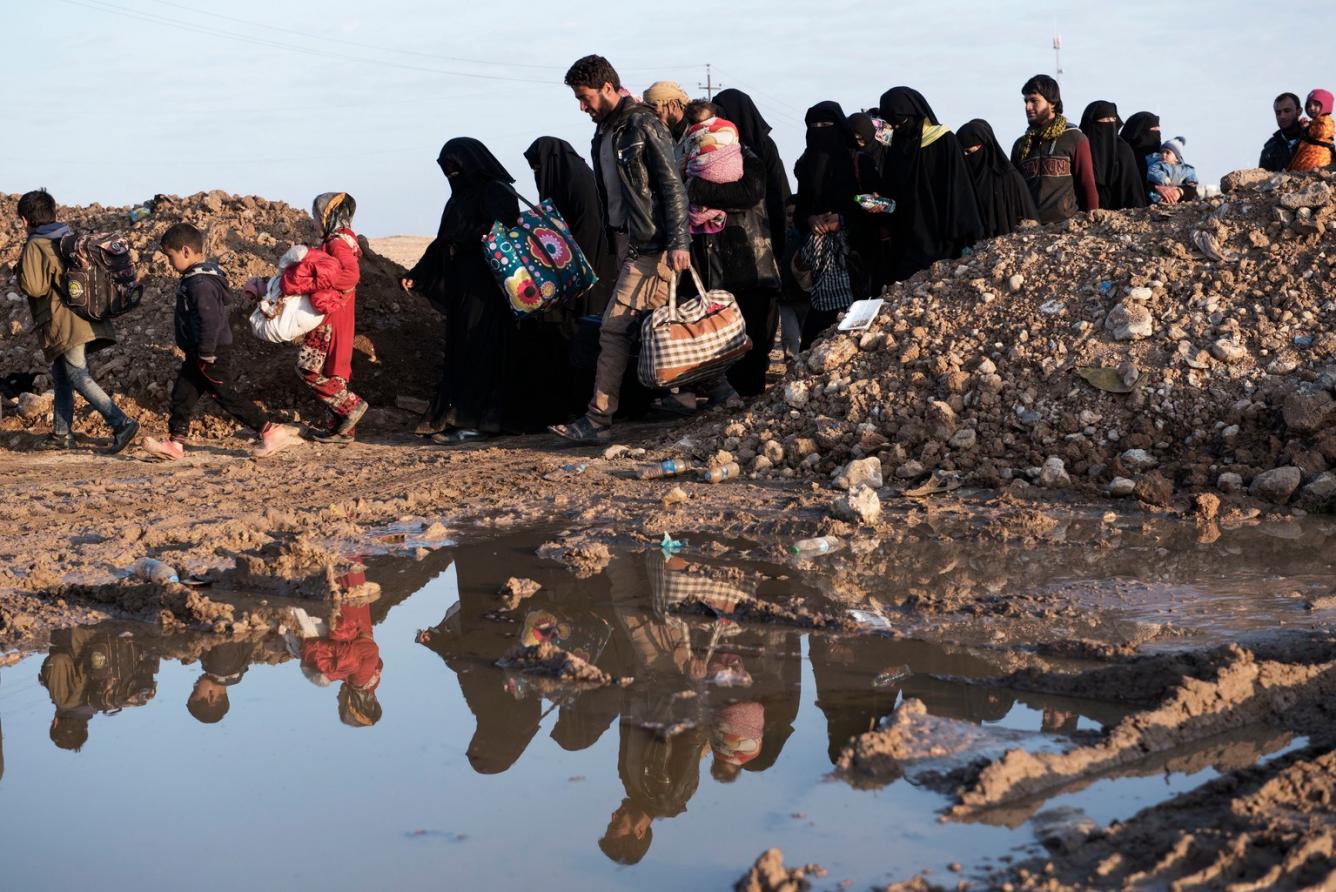
Children and adults displaced by fighting in Mosul arrive at an Iraqi security forces’ identification centre near the village of Adhbah, Iraq, March 2017. Many children fleeing the violence are severely distressed and need care to help them cope with the trauma they have experienced.
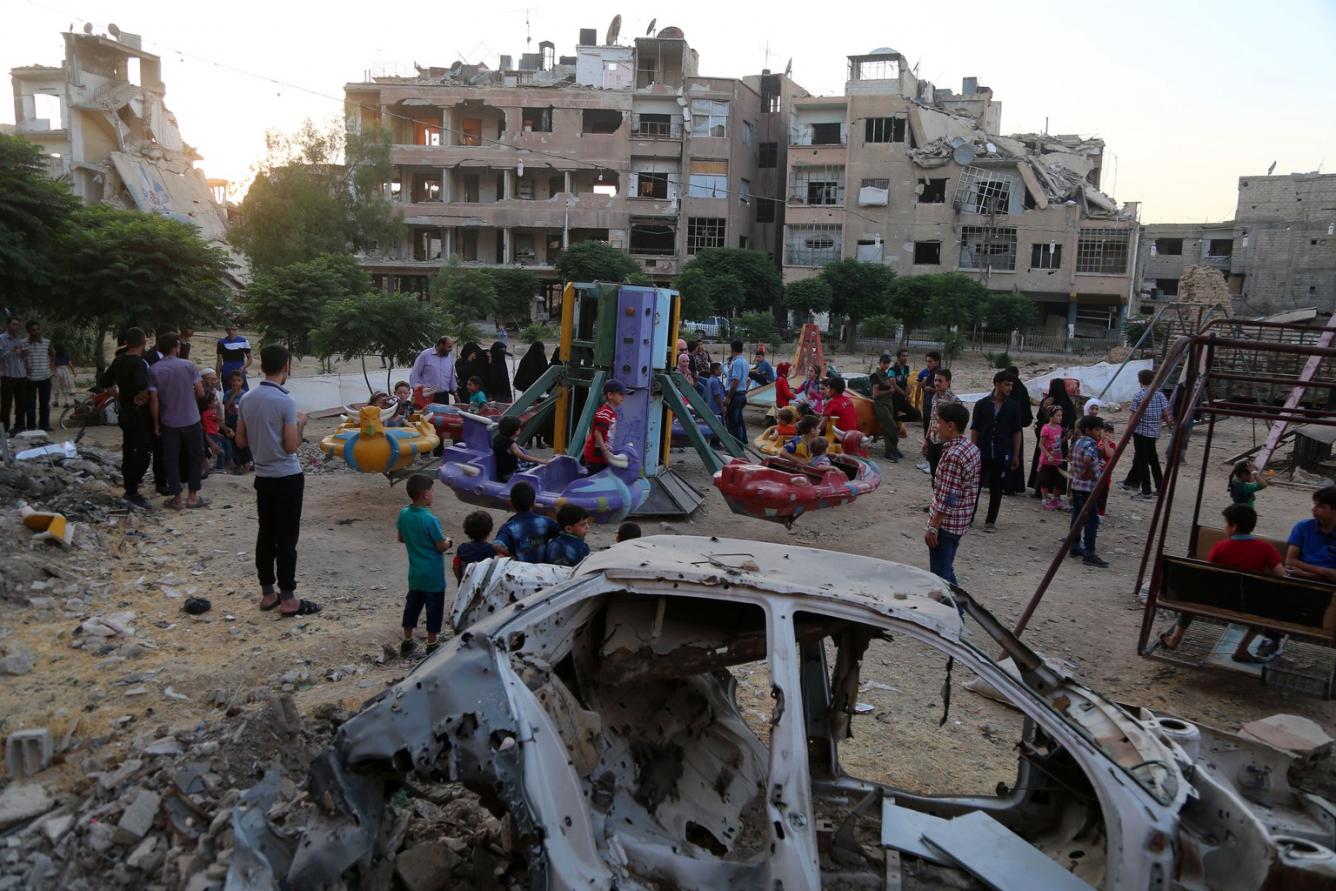
Around half of the 540,000 people living under siege in the Syrian Arab Republic are children. Despite siege blocking the delivery of humanitarian assistance, children in eastern Ghouta play as they celebrate Eid al-Fitr marking the end of Ramadan in June 2017.
A medical practitioner uses a Mid Upper-Arm Circumference (MUAC) measuring tape on a child suffering from Severe Acute Malnutrition (SAM) in Bani Al-Harith, Yemen, February 2017. Malnutrition is leaving more than 1.8 million children more vulnerable to deadly cholera and diarrhoea in Yemen.
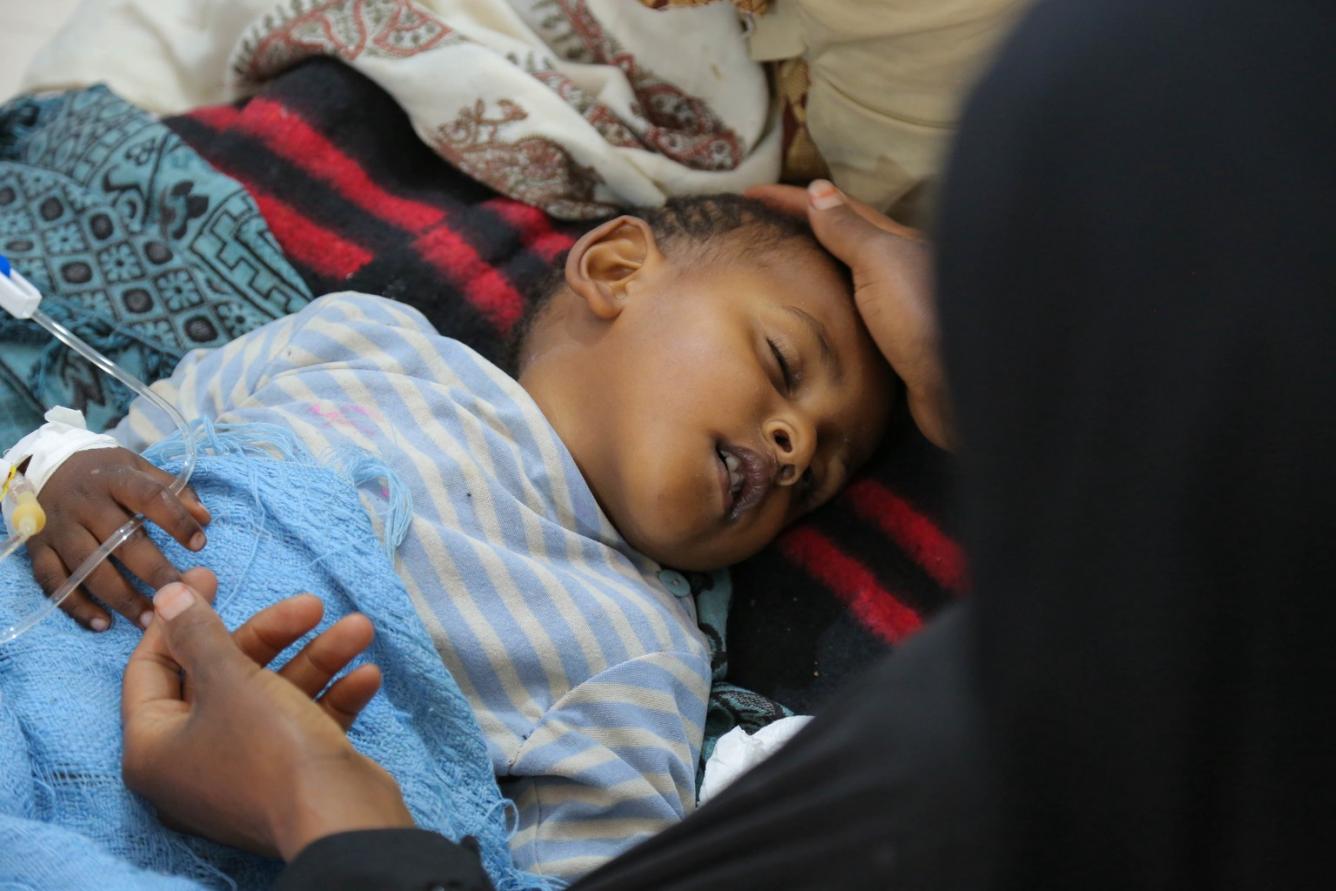
With nearly collapsed water, sanitation and health systems, and ongoing war, 27.7 million Yemenis face the world’s worst cholera outbreak amidst the world’s largest humanitarian crisis. At the Al Sabeen Hospital in Sana’a, Yemen in May 2017, a child with severe diarrhoea receives treatment.
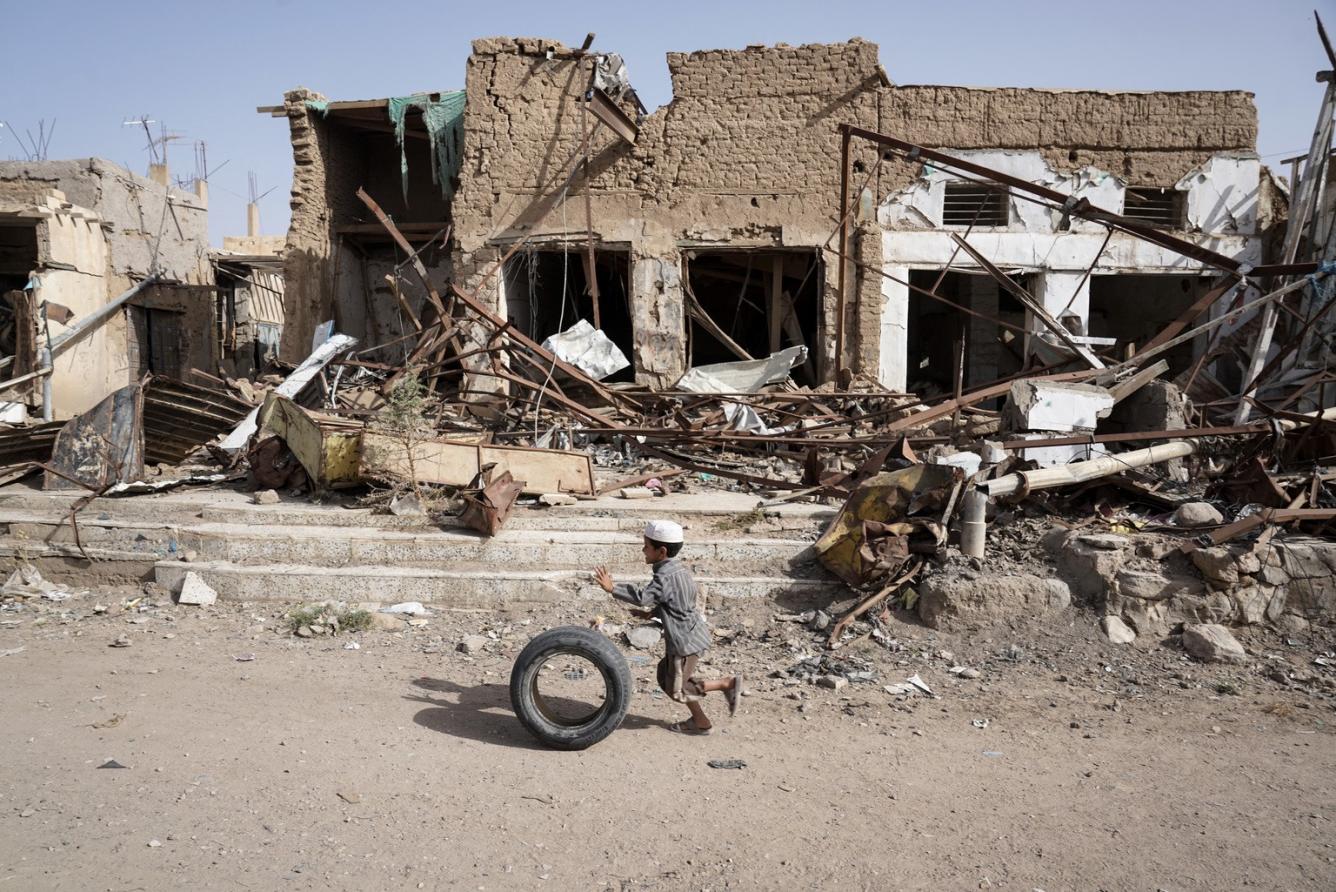
A boy runs with a tyre as he plays outside buildings destroyed by fighting in Saada’s old city, Yemen, April 2017. To provide life-saving humanitarian assistance to children and their families, unconditional and unhindered access is required for all humanitarian actors. Children are #NotATarget.
